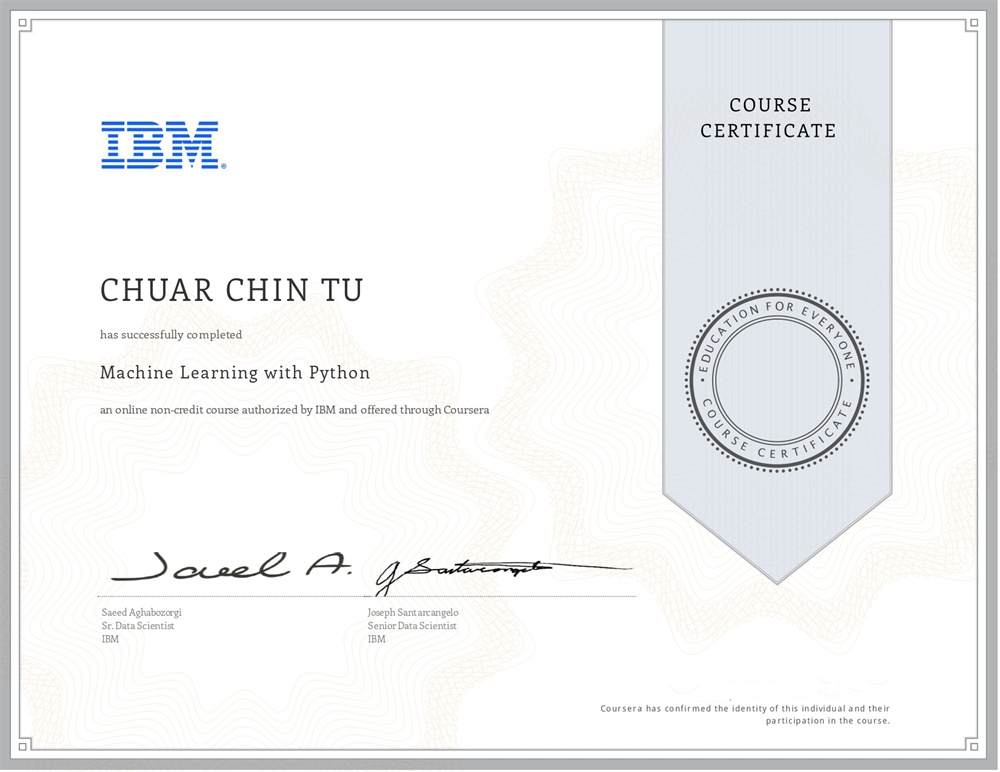Eric Chuar has completed the Machine Learning with Python for Personal & Professional Productivity and received a certificate from IBM.
SCHOOL:
IBM
GRADUATED:
2019
DURATION:
6 Months

Machine Learning with Python Skills Gained
Describe the various types of Machine Learning algorithms and when to use them
Write Python code that implements various classification techniques including K-Nearest neighbors (KNN), decision trees, and regression trees
Compare and contrast linear classification methods including multiclass prediction, support vector machines, and logistic regression
Evaluate the results from simple linear, non-linear, and multiple regression on a data set using evaluation metrics
Course Perspective
Just wrapped up the Machine Learning with Python course, and I’ve got to say, it was a wild ride. I already had a knack for programming and digital marketing, but machine learning? It felt like uncharted territory, and I was up for the challenge.
Types of Algorithms: The course began with a deep dive into different machine learning algorithms. From supervised to unsupervised learning, it was like a smorgasbord of computational methods. Honestly, it’s cool to know which algorithm to use for what kind of problem.
Python Coding: This was my jam! We got hands-on experience writing Python code for various classification techniques. We played around with K-Nearest Neighbors (KNN), decision trees, and even regression trees. Never thought I’d say this, but coding for machine learning is addictive.
Linear Classification: Here, we got into the nitty-gritty. I learned how to distinguish between different linear classification methods like multiclass prediction, support vector machines, and logistic regression. If you’d asked me a month ago about any of this, I would have given you a blank stare. But now, I feel like I’ve got a good grip on it.
Evaluation: The course ended with evaluating the results of different models. We looked at how to measure the performance of linear, non-linear, and multiple regression models. Honestly, evaluating your model is as crucial as building it.
So, why did I take this course? I’ve always loved sharing my knowledge. Living in Malaysia and Singapore has shown me how much people appreciate valuable information. With this course under my belt, I’m excited to integrate machine learning into my digital marketing strategies and, of course, share what I’ve learned with others.
The best part? I can use these skills in so many areas of my life. Whether I’m teaching badminton, enjoying a glass of red wine, or spending time with my family, understanding the mechanics of decision-making and prediction is priceless. I’m really looking forward to applying all these new skills, not just in my professional life but in my everyday interactions as well.
